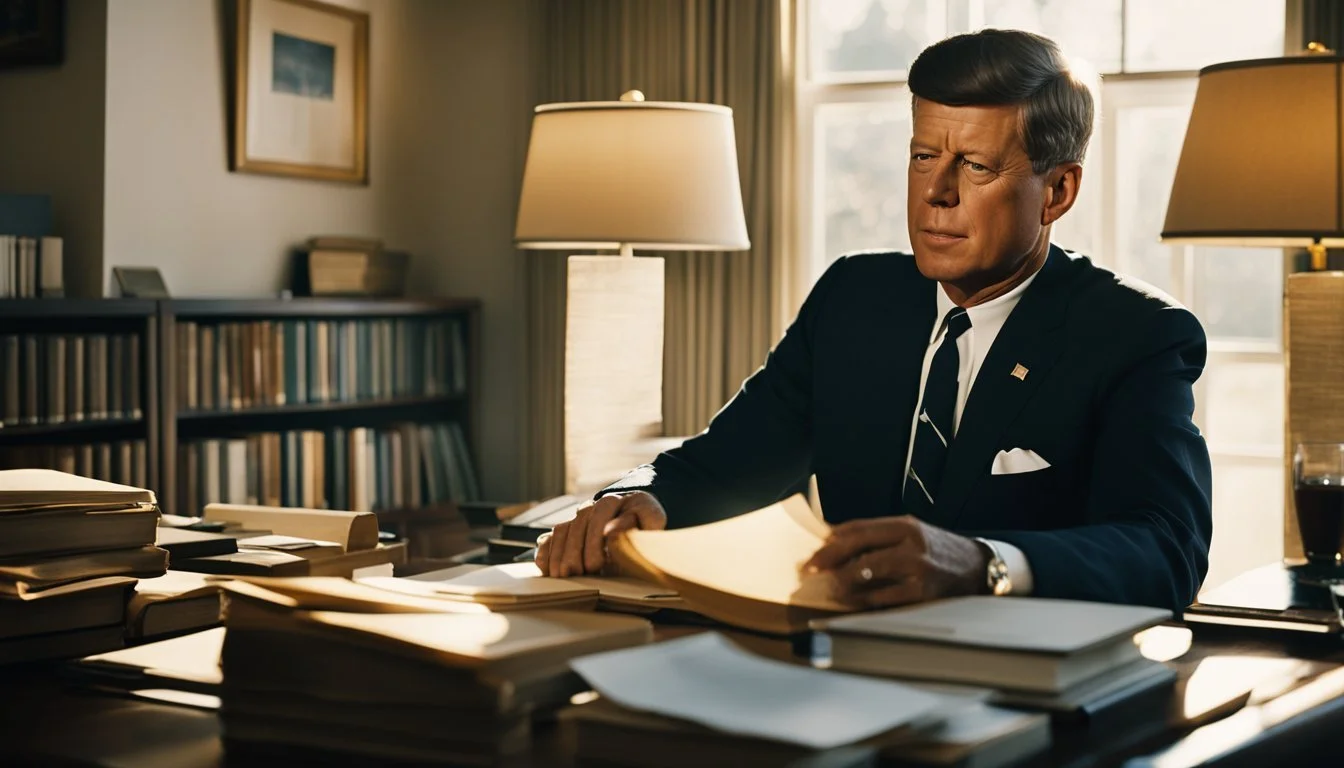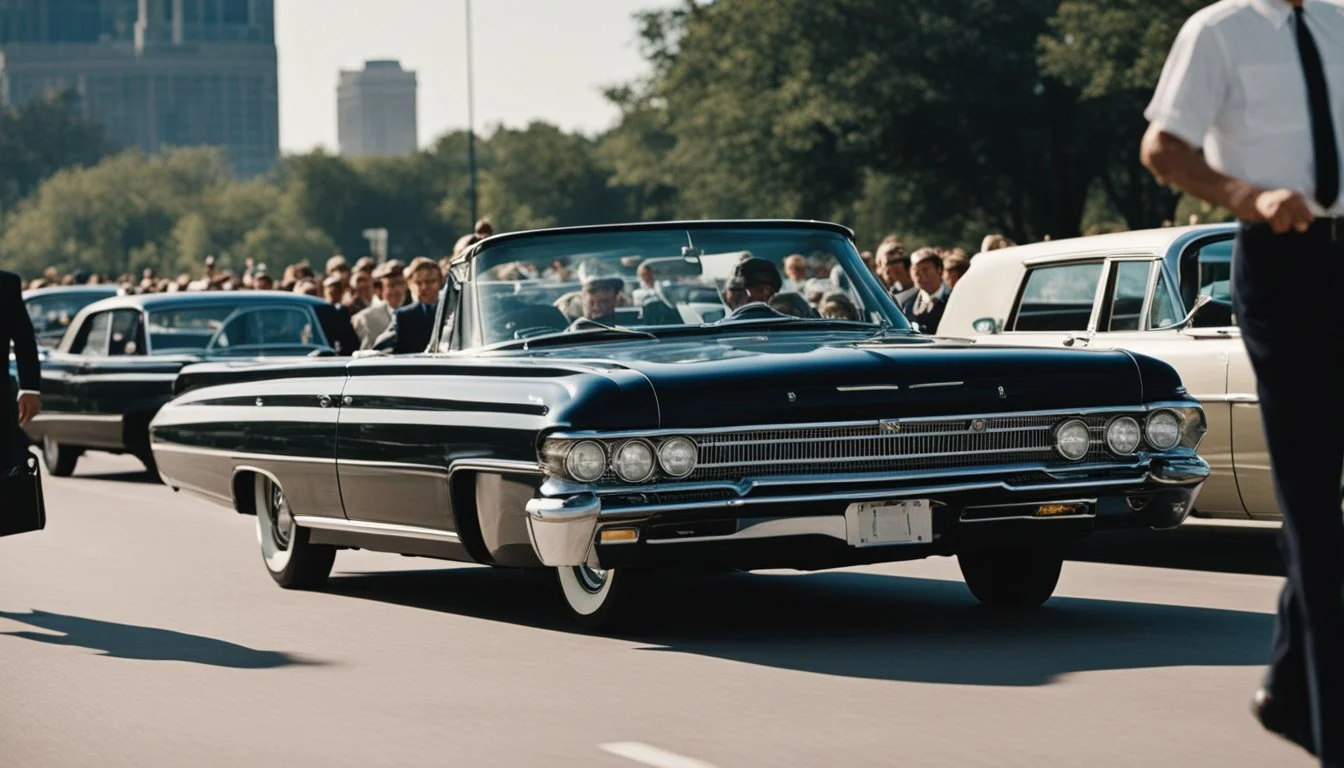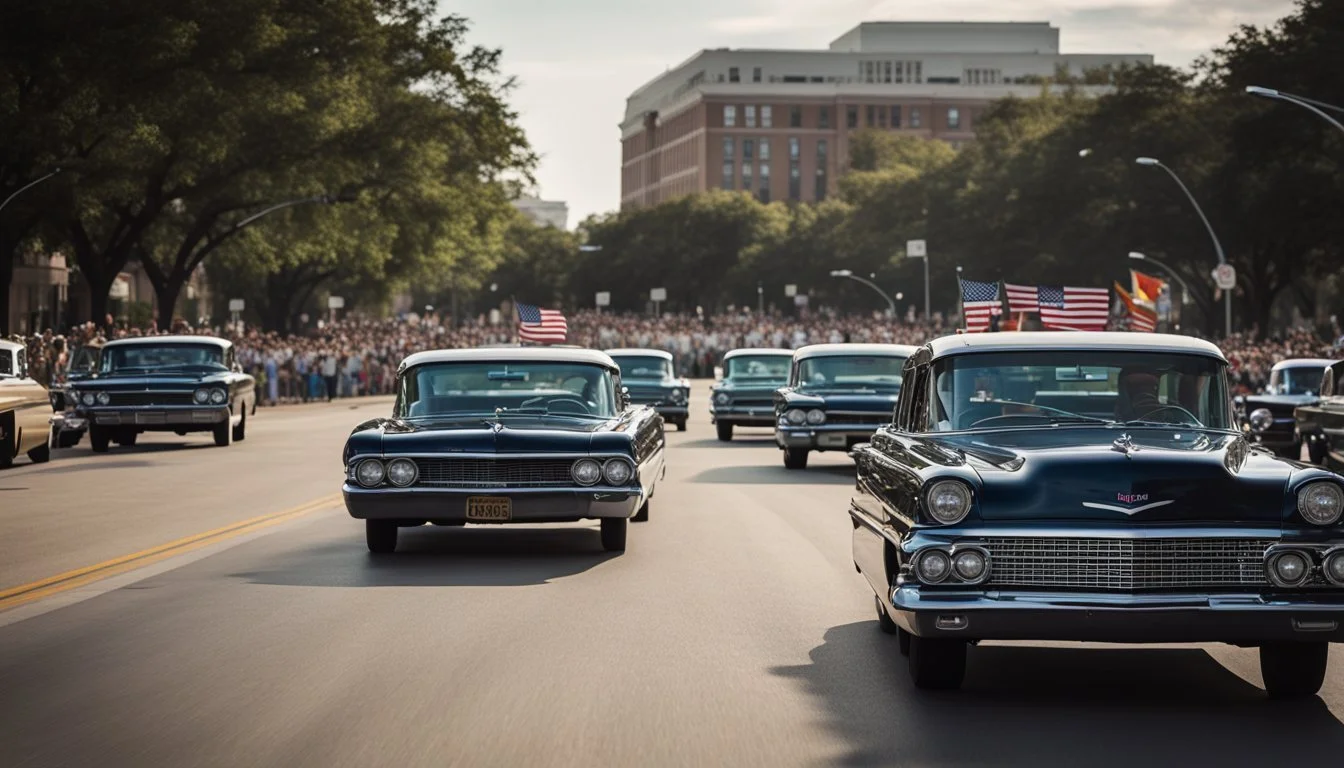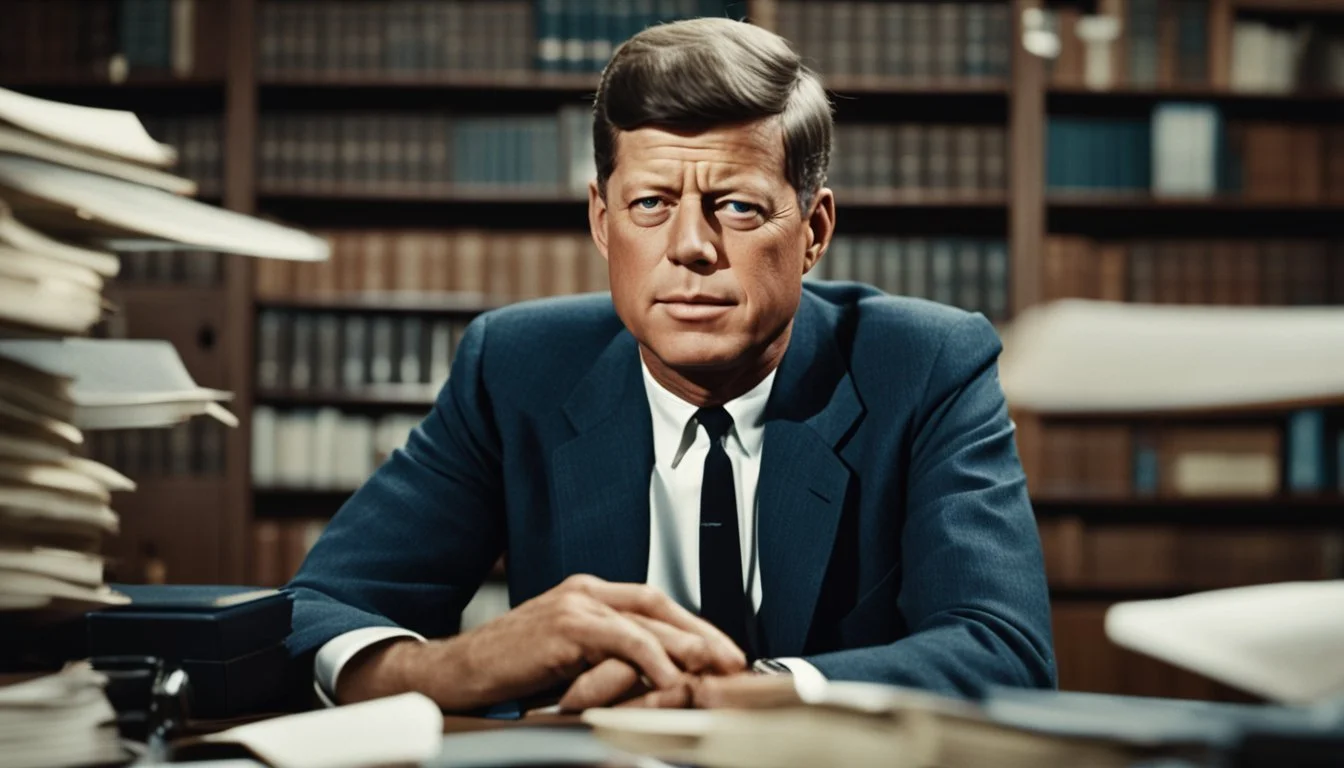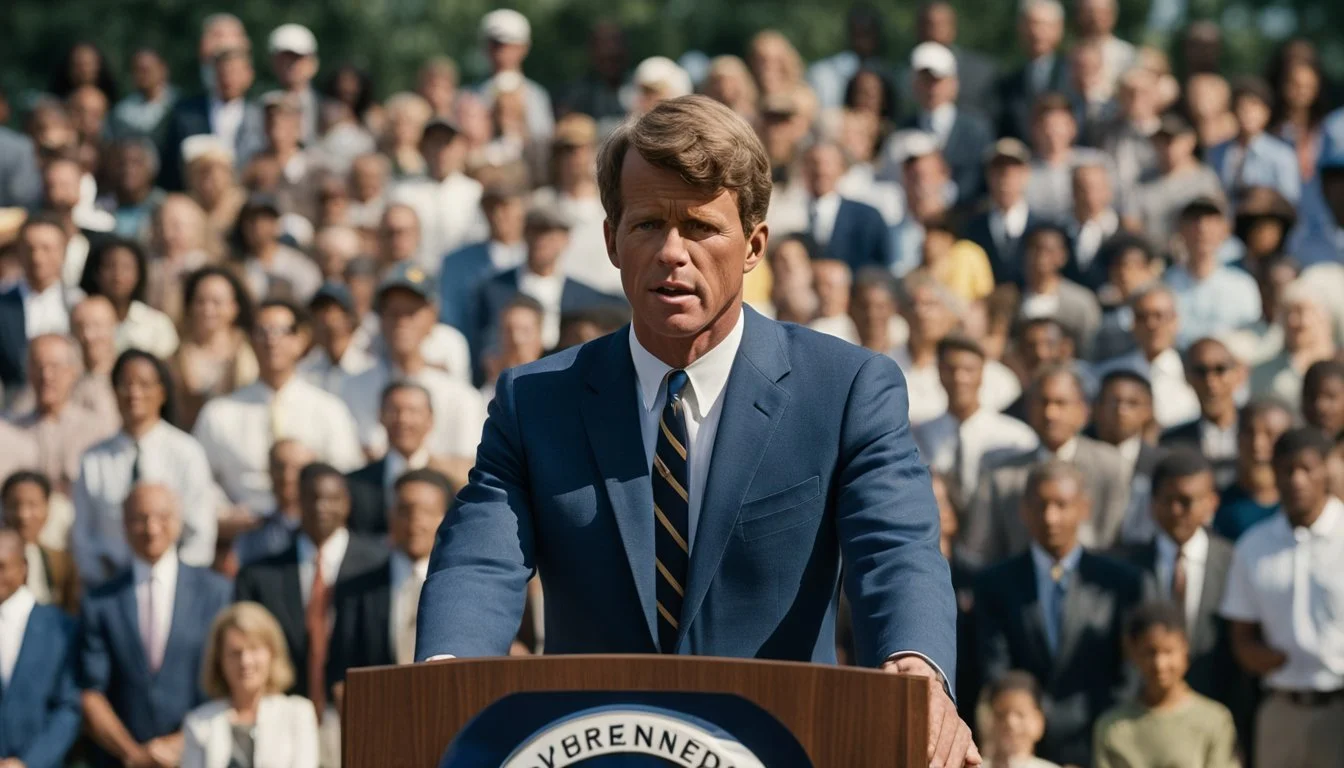Grassy Knoll or Lone Gunman? Decoding the JFK Assassination Mystery 60 Years Later
The assassination of President John F. Kennedy on November 22, 1963, remains one of the most debated events in American history. Decades after that fateful day in Dallas, conspiracy theories continue to captivate the public imagination. While official investigations concluded that Lee Harvey Oswald acted alone, doubts persist.
Numerous conspiracy theories have emerged over the years, but concrete evidence supporting them remains elusive. Some speculate about CIA involvement, mafia connections, or even Cuban retaliation. A 2023 Gallup poll revealed that 65% of Americans believe JFK's death resulted from a conspiracy rather than the actions of a lone gunman.
Despite extensive investigations and analysis, no smoking gun has emerged to definitively prove a conspiracy. The enduring fascination with alternative explanations speaks to the tragedy's profound impact on the nation's psyche. As new information surfaces and old leads are reexamined, the quest for truth about JFK's assassination continues.
Historical Context
The assassination of President John F. Kennedy occurred during a tumultuous period in American history. Cold War tensions, domestic political shifts, and Kennedy's own policies shaped the environment leading up to that fateful day in Dallas.
Political Climate in the 1960s
The early 1960s saw significant social and political changes in the United States. Civil rights movements gained momentum. The Space Race with the Soviet Union intensified. Domestically, Kennedy faced opposition from conservatives who viewed his policies as too liberal.
Kennedy narrowly won the 1960 election against Richard Nixon. His presidency brought a sense of youthful energy to the White House. However, political divisions remained stark, especially on issues like civil rights and foreign policy.
John F. Kennedy's Presidency and Policies
Kennedy's "New Frontier" agenda aimed to address poverty, civil rights, and economic growth. He created the Peace Corps and pushed for space exploration. In foreign affairs, Kennedy faced several crises.
The Bay of Pigs invasion in 1961 was a failed attempt to overthrow Fidel Castro in Cuba. This fiasco damaged Kennedy's reputation early in his presidency. The Cuban Missile Crisis in 1962 brought the U.S. and Soviet Union to the brink of nuclear war.
Kennedy increased U.S. involvement in Vietnam, sending military advisors to support South Vietnam against communist forces.
Tensions of the Cold War
The Cold War defined much of Kennedy's foreign policy. U.S.-Soviet relations remained tense, with both sides engaged in a nuclear arms race. Kennedy sought to contain communism globally.
In Europe, the Berlin Wall crisis of 1961 heightened East-West tensions. Kennedy's famous "Ich bin ein Berliner" speech in 1963 reaffirmed U.S. support for West Berlin.
Latin America was another Cold War battleground. Kennedy launched the Alliance for Progress to counter Soviet influence in the region. Cuba remained a particular concern, with ongoing efforts to undermine Castro's regime.
The Assassination in Dallas
President John F. Kennedy's assassination in Dallas on November 22, 1963 shocked the nation and sparked decades of controversy. The events of that fateful day in Dealey Plaza dramatically altered the course of American history.
Dealey Plaza on November 22, 1963
Dealey Plaza bustled with excitement as crowds gathered to catch a glimpse of President Kennedy. The plaza's layout featured tall buildings, grassy areas, and a gentle curve in the road.
The Texas School Book Depository overlooked the plaza, providing a clear view of the motorcade route. Lee Harvey Oswald, an employee there, had positioned himself on the sixth floor.
At 12:30 PM, shots rang out as the presidential limousine passed through the plaza. Chaos erupted as bystanders scrambled for cover and police rushed to respond.
Motorcade Route and Security Details
The motorcade route took Kennedy through downtown Dallas to the Trade Mart for a luncheon speech. The 10-mile journey passed through heavily populated areas, presenting security challenges.
Secret Service agents rode in vehicles near the presidential limousine. However, standard security protocols were not fully implemented that day.
No agents rode on the rear bumper of Kennedy's car
The bubble top was removed from the limousine
Windows in nearby buildings were left open
These lapses later faced scrutiny in investigations of the assassination.
Witness Reports and Initial Reactions
Witnesses in Dealey Plaza reported hearing three shots. Some believed they came from the grassy knoll area, while others pointed to the Book Depository.
Abraham Zapruder captured the assassination on film, providing crucial evidence. His footage showed Kennedy's fatal head wound in graphic detail.
The wounded president was rushed to Parkland Hospital. Doctors worked frantically but could not save him. At 1:00 PM, John F. Kennedy was pronounced dead.
News of the assassination spread rapidly. Shock and disbelief gripped the nation as Americans struggled to comprehend the loss of their young president.
Investigations and Evidence
Multiple official inquiries and independent analyses have examined the evidence surrounding President Kennedy's assassination. These investigations have produced conflicting conclusions and sparked ongoing debate.
The Warren Commission Report
The Warren Commission, established by President Johnson, conducted the first major investigation. It concluded Lee Harvey Oswald acted alone in killing Kennedy. The commission's 888-page report detailed witness testimony, forensic evidence, and Oswald's background.
Key findings included:
Three shots fired from the Texas School Book Depository
Oswald's rifle and shells matched evidence at the scene
No credible evidence of conspiracy
Critics argue the investigation was rushed and overlooked crucial evidence. Questions remain about witness accounts and ballistics analysis.
Critical Evidence Analysis
The "magic bullet" theory remains controversial. This single bullet supposedly caused multiple wounds to Kennedy and Governor Connally.
Ballistics experts disagree on its plausibility. Some argue the bullet's condition is inconsistent with causing so much damage. Others claim it aligns with wound patterns.
Forensic technology advancements have allowed for new analysis. 3D reconstructions and acoustic evidence provide additional insights. These tools have both supported and challenged official conclusions.
Subsequent Inquiries and Assessments
The House Select Committee on Assassinations reinvestigated in 1976-1979. It suggested a probable conspiracy based on acoustic evidence. This conclusion remains disputed.
The National Academy of Sciences later reviewed this evidence. They found it unreliable for determining shot timing or origins.
In 1992, Congress created the Assassination Records Review Board. This body collected and released previously classified documents. While revealing new details, major revelations remain elusive.
Recent document releases continue to fuel debate. Historians and researchers examine newly available information for potential insights into the assassination.
Prominent Conspiracy Theories
Numerous conspiracy theories have emerged surrounding the assassination of President John F. Kennedy. These theories challenge the official narrative of a lone gunman and propose alternative explanations for the events of November 22, 1963.
CIA Involvement Hypothesis
Some theorists claim the CIA orchestrated Kennedy's assassination. They point to tensions between Kennedy and the agency over the Bay of Pigs invasion and Cuba policy. Proponents argue the CIA had both motive and means to carry out the assassination.
Alleged evidence includes connections between Lee Harvey Oswald and CIA operatives. Some suggest CIA figures like E. Howard Hunt and Allen Dulles played roles in the plot.
Critics counter that no concrete proof of CIA involvement has ever been produced. They argue the agency had no reason to eliminate Kennedy, who supported its anti-communist efforts.
Allegations of the Mafia's Role
Mafia involvement is another popular theory. Proponents claim organized crime figures were angered by Attorney General Robert Kennedy's crackdown on the mob. They argue the mafia had the resources and criminal networks to plan the assassination.
Some allege connections between Oswald's killer, Jack Ruby, and organized crime. Theorists point to Ruby's ties to nightclubs and gambling operations with mafia links.
Skeptics note the lack of hard evidence tying mob bosses to the assassination. They argue the mafia lacked the power to orchestrate such a high-profile murder.
The 'Second Shooter' and Grassy Knoll Theory
The "grassy knoll" theory proposes a second shooter fired at Kennedy from this raised area in Dealey Plaza. Supporters cite witness accounts of gunshots from multiple directions and argue Oswald could not have fired all shots alone.
Some claim to see a gunman in photographs of the grassy knoll. Acoustic evidence has been presented suggesting more than three shots were fired.
Critics argue the physical evidence only supports shots from the Texas School Book Depository. They say witness accounts are unreliable and no second shooter was ever identified.
Other Governmental and Political Figures
Some theories implicate other government officials in the assassination. Vice President Lyndon Johnson is sometimes accused of orchestrating the plot to become president. FBI Director J. Edgar Hoover is alleged by some to have covered up evidence of a conspiracy.
These theories often claim powerful figures had Kennedy killed to prevent shifts in Cold War policies or domestic reforms. Some suggest military leaders opposed to Kennedy's Vietnam plans were involved.
Skeptics point out the lack of evidence supporting involvement of other officials. They argue the logistical challenges of such high-level conspiracies make them implausible.
Cultural Impact
The JFK assassination has profoundly shaped American culture, influencing media, literature, and social movements for decades. Its enduring legacy continues to captivate public imagination and spark debate.
Media Representation and Public Opinion
Television coverage of the assassination and its aftermath marked a turning point in broadcast journalism. The event dominated news cycles for weeks, with networks providing unprecedented round-the-clock reporting. This intensive media focus helped shape public perception and fueled speculation about potential conspiracies.
Gallup polls have consistently shown that a majority of Americans doubt the official lone gunman theory. In 1976, 81% believed in a conspiracy. By 2013, this number had decreased but remained significant at 61%.
Documentaries and investigative journalism have played a crucial role in keeping the assassination in the public eye. Films like "Rush to Judgment" (1967) and "Executive Action" (1973) presented alternative theories, challenging the Warren Commission's findings.
Influence on Literature and Film
The assassination has inspired numerous books and films, both fictional and non-fictional. Oliver Stone's 1991 film "JFK" reignited public interest and controversy surrounding the event. The movie's dramatic portrayal of Jim Garrison's investigation sparked renewed debate about potential conspiracies.
Notable books include:
"Six Seconds in Dallas" by Josiah Thompson (1967)
"Best Evidence" by David Lifton (1980)
"Case Closed" by Gerald Posner (1993)
These works have explored various aspects of the assassination, from forensic analysis to alleged cover-ups, shaping public discourse and understanding of the event.
Conspiracy Community and Social Movements
The JFK assassination has given rise to a dedicated community of conspiracy theorists and researchers. Online forums, conferences, and publications allow enthusiasts to share ideas and evidence.
This community has influenced broader social movements, contributing to a culture of questioning official narratives. The assassination has become a touchstone for those skeptical of government transparency and mainstream media.
Some conspiracy theorists have linked the JFK assassination to other events, creating interconnected webs of alleged covert operations. This has led to the development of complex alternative histories and narratives about power structures in America.
Assassination Aftermath
The assassination of President John F. Kennedy had far-reaching consequences that reshaped American politics, security protocols, and the Kennedy family legacy. It left an indelible mark on the nation's psyche and institutions.
Impact on the Kennedy Family
Robert Kennedy, JFK's brother and Attorney General, was devastated by the assassination. He became more withdrawn and focused on uncovering the truth behind his brother's death. Ted Kennedy, the youngest brother, stepped into a larger political role, carrying on the family's legacy in the Senate.
The tragedy deeply affected Jacqueline Kennedy and her children. She worked to preserve JFK's memory and legacy, shaping the narrative of his presidency and the "Camelot" era.
Robert Kennedy's own presidential aspirations were cut short by his assassination in 1968, further traumatizing the family and the nation.
Legal and Political Consequences
The Warren Commission, established by President Lyndon B. Johnson, concluded that Lee Harvey Oswald acted alone in assassinating JFK. This finding has been challenged by numerous conspiracy theories over the decades.
Johnson used the national grief to push through major legislation, including the Civil Rights Act and Great Society programs, as part of JFK's legacy.
The assassination led to the Presidential Succession Act of 1967, clarifying the line of succession and procedures for replacing the president and vice president.
Changes in Secret Service Protocols
The Secret Service underwent significant reforms following JFK's assassination. They improved training, increased manpower, and enhanced protective measures for the president and other high-ranking officials.
New protocols included:
Armored presidential limousines
Advanced surveillance techniques
Stricter crowd control measures
Enhanced coordination with local law enforcement
The agency also expanded its intelligence gathering capabilities to better anticipate and prevent potential threats to the president's safety.

